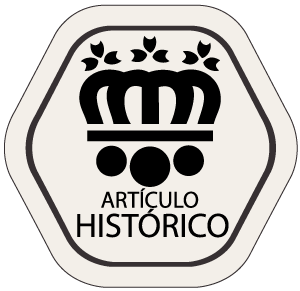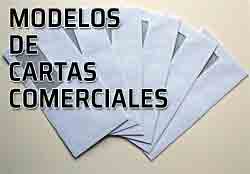
Carta: Relación de enfermedades.
Cartas particulares. Carta en la que se relata la enfermedad de un familiar.

Cartas particulares.
Relación de enfermedades.
Tarancón, 4 de agosto de 19__.
Muy querida Isabel:
Tiene Vd. Razón al suponer (1) que me ha pasado algo grave. Es decir, a mí no me ha pasado, (2) a Dios gracias, pero sí a mi hermanito; (3) por más que peor hubiera podido sucedes (4). Le contaré a Vd.
Precisamente la tarde del mismo día que recibí su penúltima carta, Rafaelito a la hora de comer no quiso probar bocado, cosa rara en él, que siempre se sentaba a la mesa con un apetito atroz. Nos alarmó a todos verle cabizbajo, caídos los párpados, coloradas las mejillas, sin ganas de reírse (5) ni de bromear. Al preguntarle qué era lo que tenía, (6) contestó muy mohíno (7) que sentía escalofríos por todo el cuerpo. Como notamos que estaba calenturiento, después de acostarle le pusimos mostazas en las (8) piernas y así pasó la noche bastante tranquilo.
A la mañana (9) siguiente, se despertó a las siete, diciendo que le dolía mucho la garganta. ¿Será (10) resultado de una indigestión? ¿Será una angina? nos preguntamos. Ya puede Vd. Figurarse nuestra ansiedad. Sarampión, escarlatina, tifus, viruela, pulmonía, crup, todas las enfermedades habidas y por haber, (11) pasaron por nuestra imaginación. Llamamos al médico, y después de pulsar al enfermito, de hacerle sacar la lengua, (12) de tomarle la temperatura (13) con el termómetro y de examinarle la garganta, dijo ¡horror! que se trataba de (14) un caso de difteria y que había que darle (15) inmediatamente una inyección de suero.
Imagínese Vd., Isabel, nuestra desesperación, y los días de zozobra que hemos pasado cuidando a Rafaelito. Por supuesto, tuvimos que sacar en el acto a María, (16) y a Ramón por temor al contagio. A María la enviamos a casa de su padrino y a Ramón a casa de su abuelita. (17)
Por fortuna, con la inyección de suero diftérico, Rafaelito fue mejorando (18) y hoy está ya fuera de peligro. Dentro de unos días vendrán a fumigar la casa y podremos traer ya a los ausentes y estar otras vez reunidos en familia. ¡Le digo a Vd. que no es flojo el susto que hemos pasado!
No si sabrá (19) Vd. que Don Pablo Collantes murió de un ataque de apoplejía el martes pasado. Ese señor era el padrastro de aquella muchacha Gertrudis que se casó con un coronel y enviudó al poco tiempo.
Por lo demás, el resto de la familia vamos siguiendo bien, (20) aunque papá se queja de vez en cuando de la gota, y mamá dice que nunca a verse (21) libre del maldito reuma en la rodilla.
Yo soy la única que no puedo quejarme. Aquel ataque que parecía iba a ser (22) enfermedad del hígado desapareció completamente, y no he vuelto a sentir ni sombra. (23)
Con lo que llevo dicho, (24) no extrañará que no le escribiese (25) antes, pues no quise alarmarla, y preferí ver en qué paraba lo de Rafaelito. (26) Ya sabe Vd. que en casos tales no se tiene la cabeza para nada (27).
Perdóneme, pues, y escríbame largo y tendido, que ya sabe (28) que es grande mi goce al ver letra (29) suya.
Recuerdos cariñosos a los que preguntan (30) por mí, y reciba mil besos de su constante amiga,
Aurora.
Notas:
(1) al suponer: in supponsing. See note (1) on article about "Manual de correspondencia".
(2) a mi no me ha pasado: it has not happened to me. Note the use of the double pronoun "a mí" and me for emphasis.
(3) pero sí a mi hermanito: but yes to my little brother; i.e., but it has happened to muy little brother (with emphasis on the word has). The use of "sí" in this way is very common.
(4) por más que ... suceder: although worse might have happened. The subjunctive is used after conjunctive expressions denoting concession.
(5) sin ganas de reírse: without desires of laughing; i.e., without inclination to laugh.
(6) qué era lo que tenía: what is was that he had; i.e., what ailed him.
(7) mohino: fretfully. See letter, "De vacaciones", note (25).
(8) las: his. The definite article is frequently used instead of the possessive, especially when speaking of parts of the body or articles of clothing.
(9) A la mañana. "A" here has the force of on, or may be left untranslated.
(10) ¿Será: can it be? See letter, "El idioma español", note (7).
(11) enfermedades ... haber: all diseases had and to have; i.e., all diseases known and unknown.
(12) de hacerle sacar la lengua: after making him put out his tongue. "Después" is understood before "de".
(13) de tomarle la temperatura: after taking for him the temperature; i.e., after taking his temperature. The dative of interest is often used in connection with the construction explained above in note 8.
(14) se trataba de: it was a question of; i.e., we were dealing with.
(15) había que darle: it was necessary to give him, See note (18) on article "Manual de correspondencia".
(16) sacar ... a María: to get María out (of the house). The "a" is the so-called "personal a".
(17) abuelita. "Abuela" means grandmother. The addition of the diminutive ending "-ita" adds a tone of endearment which it is difficult to translate. It may perhaps be best translated by granny.
(18) fué mejorando: went improving; i.e., gradually improved.
(19) si sabrá: whether you know. "Si" in the sense of whether is often followed by the future or the conditional.
(20) el resto ... bien : the rest of the family we go on continuing well; i.e., the rest of us are still in good health. Note the third person subject "resto de la familia" with the first person verb "vamos". The reason for this is that the writer includes herself in the "resto de la familia".
(21) va a verse: is going to see herself. "Ir" followed by "a" and an infinitive means to be going to.
(22) que parecía iba a ser: which, it seemed, was going to be.
(23) no he vuelto a sentir ni sombra: I have not returned to feel even a trace; i.e., I have not felt again even a trace. "Volver" followed by "a" and an infinitive means to do again whatever is expressed by the infinitive.
(24) llevo dicho: I carry said; i.e., I have said. "Llevar" is frequently used as an auxiliary instead of "haber". It is more emphatic than "haber".
(25) escribiese. The subjunctive is used after expressions of emotion (joy, sorrow, fear, wonder, etc.).
(26) en qué paraba lo de Rafaelito: in what the matter of Rafaelito was stopping; i.e., how Rafaelito’s case was going to end.
(27) no se tiene la cabeza para nada: one hasn’t a head for anything. Observe that Spanish translates anything by "nada" (which means literally nothing) in a negative sentence.
(28) que ya sabe : for you know. "Que" often is used for "porque".
(29) "letra" does not mean letter. See the vocabulary.
(30) pregunten. The subjunctive is used in relative clauses which refer to an indefinite antecedent.
-
6148

Aviso Los artículos "históricos" se publican a modo de referencia
Pueden contener conceptos y comportamientos anacrónicos con respecto a la sociedad actual. Protocolo.org no comparte necesariamente este contenido, que se publica, únicamente, a título informativo
Su opinión es importante.
Participe y aporte su visión sobre este artículo, o ayude a otros usuarios con su conocimiento.
-
Cartas comerciales. Importación de material ferroviario, información sobre productos, precios y condiciones.
-
Cartas comerciales. Se ofrecen productos españoles y de las Antillas para su representación y venta, adjuntando un listado de precios de estos artículos.
-
Cartas comerciales. Agradecen la información recibida sobre la nueva sociedad.
-
Cartas comerciales. Reclamación por recepción de artículos de inferior calidad a los ofertados y mostrados, asi como diferencias en los precios pactados al hacer el pedido de compra.
-
Cartas comerciales. Comunica la baja voluntaria de una persona como socio de una empresa.
-
Cartas comerciales. Acuse de recibo del catálogo y realización de algunas consideraciones sobre los productos ofertados.
-
Cartas comerciales. Una empresa aceptar ser representada por la persona que les ha ofrecido sus servicios
-
Cartas comerciales. El informe solicitado sobre una empresa o persona no es favorable y se comentan algunos detalles sobre su capital.
-
Una amiga le cuenta a otra como ha transcurrido la boda de su prima Trinidad.
-
Cartas comerciales. Ofrecen la representación de sus artículos a un importador de excelente reputación en los negocios.
-
Cartas comerciales. Carta para informar de la fundación de una sociedad, y los detalles principales de ésta.
-
Cartas comerciales. Recepción del pedido de ferretería y realización de un nuevo pedido.
